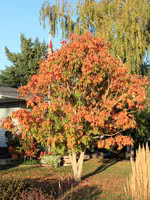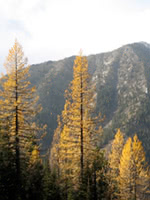Mon-Fri 9am - 5pm Mountain time
Ohio Buckeye vs Western Larch
Aesculus glabra
Larix occidentalis
Ohio Buckeye is a medium sized deciduous tree. If you are looking for a shade tree, Ohio Buckeye's dense canopy of unique leaves can provide it.
Named after its fruit, an inedible nut enclosed in a prickly husk, Ohio Buckeye also features green-yellow flowers and long, broad leaves that turn brilliant red in the fall.
Slow growing, but an extremely attractive tree. Find out what experienced horticulturalists already know: this tree is a gem.
A top CO2 absorbing species. Experts think this tree may help climate change more than others.
Western Larch is a pioneer species that can survive in nutrient poor soil and is found in the valleys and on the lower slopes of mountains in mixed forests. In the warm months, this larch is covered in clusters of soft green needles that turn golden yellow before dropping in the fall. Its dense, sturdy wood is excellent for lumber, making this Larch valuable in Western North America.
Ohio Buckeye Quick Facts
Western Larch Quick Facts
Toxicity: nuts are toxic to humans and cattle

